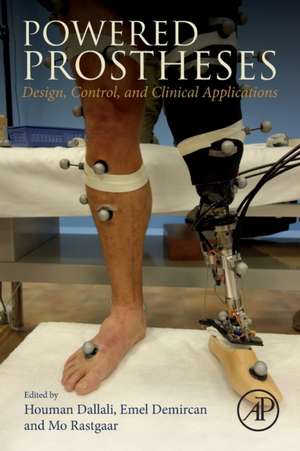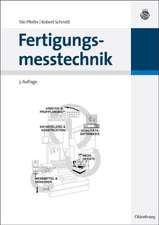Powered Prostheses: Design, Control, and Clinical Applications
Editat de Houman Dallali, Emel Demircan, Mo Rastgaaren Limba Engleză Paperback – 16 apr 2020
- Describes the latest assistive technologies that can help individuals deal with joint pain or limb loss
- Presents a tangible and intuitive description of scientific achievements made
- Highlights the existing technologies and devices that are available and used by amputees or patients with mobility limitations
- Suggests solutions and new results that can further enhance assistive technologies
Preț: 594.38 lei
Preț vechi: 816.89 lei
-27% Nou
Puncte Express: 892
Preț estimativ în valută:
113.75€ • 117.51$ • 94.67£
113.75€ • 117.51$ • 94.67£
Carte tipărită la comandă
Livrare economică 18 martie-01 aprilie
Preluare comenzi: 021 569.72.76
Specificații
ISBN-13: 9780128174500
ISBN-10: 0128174501
Pagini: 280
Dimensiuni: 152 x 229 mm
Greutate: 0.38 kg
Editura: ELSEVIER SCIENCE
ISBN-10: 0128174501
Pagini: 280
Dimensiuni: 152 x 229 mm
Greutate: 0.38 kg
Editura: ELSEVIER SCIENCE
Public țintă
Graduate and academic researchers who are focused on novel mechanical designs, control systems, or physical human robot interactionCuprins
1. Control of transhumeral prostheses based on electromyography pattern recognition: from amputees to deep learning
2. The 2-DOF mechanical impedance of the human ankle during poses of the stance phase
3. Task-dependent modulation of multi-dimensional human ankle stiffness
4. Kriging for prosthesis control
5. Disturbance observer applications in rehabilitation robotics: an overview
6. Reduction in the metabolic cost of human walking gaits using quasi-passive upper body exoskeleton
7. Neural control in prostheses and exoskeletons
8. Stair negotiation made easier using low-energy interactive stairs
9. Semi-active prostheses for low-power gait adaptation
2. The 2-DOF mechanical impedance of the human ankle during poses of the stance phase
3. Task-dependent modulation of multi-dimensional human ankle stiffness
4. Kriging for prosthesis control
5. Disturbance observer applications in rehabilitation robotics: an overview
6. Reduction in the metabolic cost of human walking gaits using quasi-passive upper body exoskeleton
7. Neural control in prostheses and exoskeletons
8. Stair negotiation made easier using low-energy interactive stairs
9. Semi-active prostheses for low-power gait adaptation





























